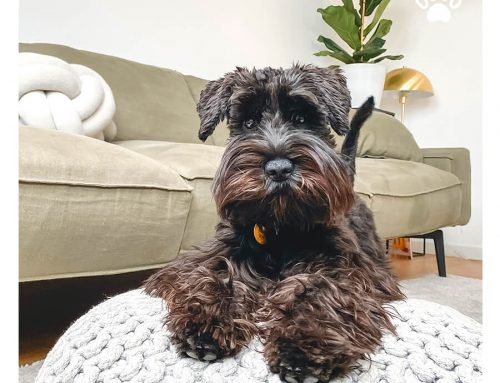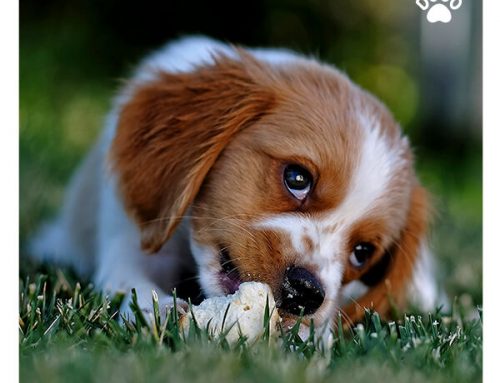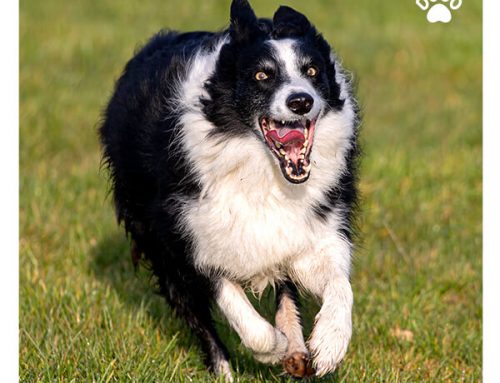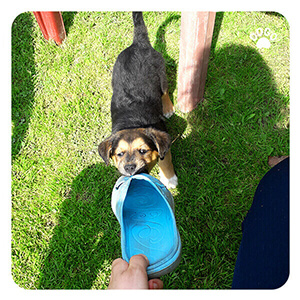
Puppies
The problem of biting mostly applies to puppies and young dogs. The very act of biting is something natural for puppies because by taking objects to the mouth, biting, and chewing, dogs learn to explore the world. Additionally, this behavior is associated with teeth eruption and their later exchange. Just like in children, tooth eruption for dogs is nothing pleasant. The tooth itself can hurt or itch the dog, therefore they try to eliminate the uncomfortable feeling by chewing.
The first milk teeth start growing when puppies are about 3-4 weeks old. By about 8 weeks puppies should already have all 28 milk teeth. During this time your puppy will bite to relieve their itchy gums. From about 3 months the process of replacing milk teeth with permanent ones begins and lasts until about 8 months of age.

Boredom
Often our pets, due to boredom or lack of suitable toys, chew on shoes, furniture, or nip us asking for attention.
It is hard to ignore the dog when they are nipping or chewing our valuables. For your dog any attention from you, even a negative one is better than none. The dog learns that such behavior is effective and worth repeating. Please understand that it is not fair and realistic for your puppy to do “nothing”. So plan your dog’s schedule, enrich the environment, and dedicate regular times throughout the day for play.
When the dog is young, people often tease them to bite their hands. This way your puppy learns that it is great fun. However, it is important to remember that some habits stay in the dog for a very long time, and in the future that sweet little furry ball can grow into a huge dog, so the pressure on their mouth will also be much stronger. Therefore get into the habit to use toys, tug ropes to play with your dog. Initiate play sessions with your dog and teach them good-mannered play and interaction.
Wellbeing
However, biting is not always a sign of bad manners. A dog can bite when they feel discomfort or pain. If the dog bites themselves it may be a sign of illness. Persistent biting on the tail, side, or paws may indicate health or behavioral problems. In this case, it is necessary to check the cause with the vet or a behaviorist. They will examine whether the behavior is based on physical or psychological factors.
How to teach your dog to stop chewing

First of all, we do not ever play with a puppy so that they can bite your hands. Human hands should be associated only with gestures such as petting or serving treats. If the dog starts to bite, react strongly with ‘no’ or ‘stop’, stop playing, and leave. This is a clear signal to the dog that you do not accept such behavior and if they want to play, they must stop doing it.
In addition to introducing boundaries and redirecting your dog’s biting behavior, you can also use bitter sprays or deterrents on furniture or other objects that your dog likes to chew. These sprays have a bitter taste that dogs find unpleasant and will discourage them from chewing on those objects. Another method to teach your dog to stop chewing is by providing them with puzzle toys or treat dispensers. These toys will challenge your dog’s mind and keep them occupied for longer periods of time, reducing their urge to chew on other objects. Finally, if you notice that your dog is chewing excessively or on inappropriate objects, it may be a sign of anxiety or stress. In such cases, it is important to consult with a veterinarian or a behaviorist to address the underlying issue.
If you have a puppy that was taken from their mother too early, it is important to know that you will need to put in extra effort to teach them good biting manners. You can start by using a verbal cue like “ouch” or “stop” when your puppy bites too hard. This will teach them that biting too hard is not acceptable. You can also use positive reinforcement when they play gently, by praising them and rewarding them with treats or toys. Another way to help your puppy learn good manners is to provide them with plenty of chew toys and interactive toys that will keep them busy and entertained. With patience and consistent training, your puppy will learn good biting manners and will grow up to be a well-behaved dog.
Dogs will be dogs
Nevertheless, you should remember that the chewing instinct is something completely natural and we cannot deny it to the dog. If the dog chews furniture or any other everyday objects, first try to hide attractive objects such as shoes. In return, give your dog harmless substitutes: chews (preferably natural ones, such as pig’s ear, etc.), toys filled with treats, as well as a toy to pull, so you can play tug of war together. If the urge for chewing and biting is satisfied, your pet will gradually lose interest in your furniture.
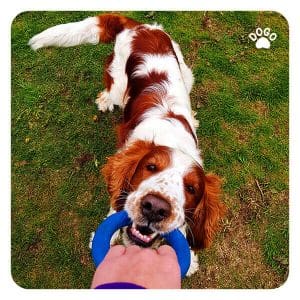
We should also remember that our furry friends have other needs such as physical activity and mental stimulation. Therefore, before leaving your pup at home alone, provide them with an adequate amount of activities. An active walk combined with playing outdoors will make your pooch happier and less prone to destroying things at home.


